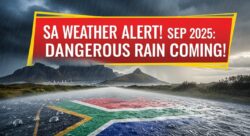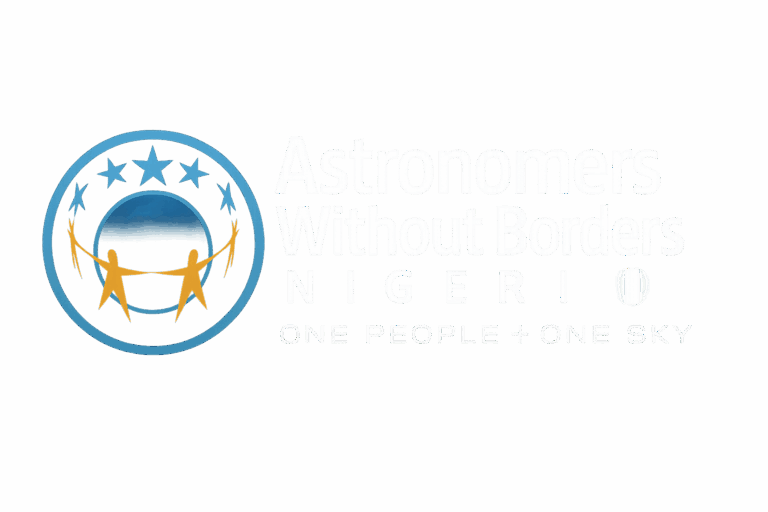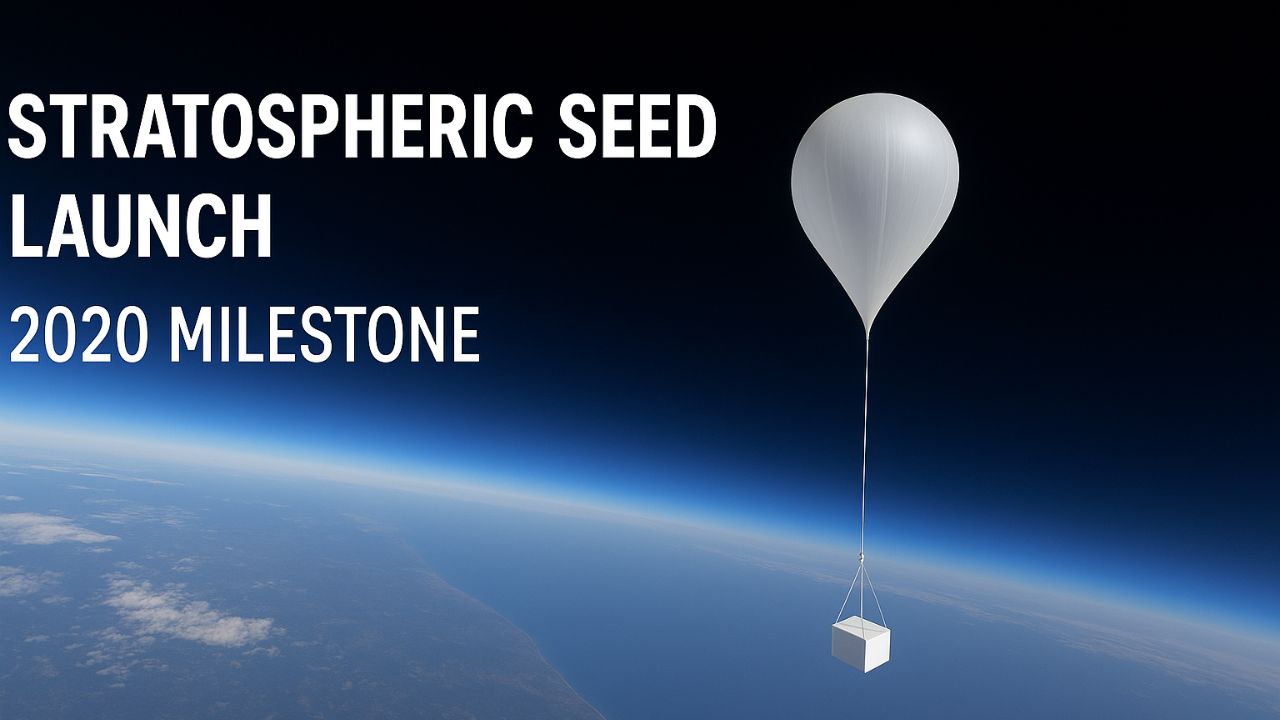Stratospheric Breakthrough : In a groundbreaking feat that captured both scientific and public attention, a Nigerian secondary school etched its name in history by successfully launching plant seeds into the stratosphere in 2020. The initiative, known as the Stratospheric Seed Launch Project, became a shining example of youth-led innovation in STEM (Science, Technology, Engineering, and Mathematics) across Africa. Orchestrated by a passionate team of students and educators, the mission aimed to explore how extreme altitudes affect seed viability and growth—a field with deep implications for future space farming and environmental science. This bold experiment was inspired by global trends in space exploration and educational innovation. As countries like the United States and China push the boundaries of agricultural research in microgravity, Nigerian students saw an opportunity to contribute meaningful data to the scientific community. With limited resources but unlimited ambition, they engineered a weather balloon system capable of reaching over 30 kilometers above sea level—the very edge of space. The project was coordinated in collaboration with international space research enthusiasts and backed by local educational authorities, NGOs, and scientific advisors. Using high-altitude balloons and small payload containers, the team sent up a range of seeds, including maize, beans, and tomatoes. Upon recovery, the seeds were germinated and monitored to compare their growth patterns with those that remained on Earth. The findings offered intriguing insights into the effects of stratospheric radiation and temperature on plant biology. This milestone set a precedent for how schools in developing nations can play a vital role in frontier science. It wasn’t just about seeds in space—it was about planting the seeds of curiosity, capability, and confidence in a new generation of innovators.
Project Overview and Educational Significance
This section outlines the project’s objectives, planning phases, and how it connected science education with practical, real-world applications.
- Initiated by a public secondary school in southwestern Nigeria.
- Involved 25 students from ages 13 to 17.
- Supported by two science teachers and an external aerospace consultant.
- Duration: 4 months from planning to launch.
- Aimed to compare stratospheric vs. ground-level seed germination.
- Featured custom-built sensors and cameras in the payload.
- The balloon reached 31.7 km in altitude before descent and recovery.
Educational Benefits and Student Participation
Students were deeply engaged in the engineering and data analysis aspects of the mission.
 South Africa Weekend Weather September 2025 – Provinces Alerted of Dangerous Rain Conditions
South Africa Weekend Weather September 2025 – Provinces Alerted of Dangerous Rain Conditions
- Designed payloads using lightweight, recycled materials.
- Programmed data loggers to capture atmospheric metrics.
- Participated in pre-launch simulations and risk assessments.
- Analyzed soil pH and water requirements post-landing.
- Engaged in hands-on physics, biology, and environmental science.
- Conducted community presentations on findings post-mission.
Technical Details of the Launch and Recovery
Understanding the nuts and bolts of the mission helps appreciate the scope of student innovation and technical application.
- Launch Date: November 14, 2020
- Location: Ilaro, Ogun State, Nigeria
- Equipment: Weather balloon, GoPro, GPS tracker, altimeter, seed samples
- Payload Weight: 420 grams
- Recovery Team: 6 students + 2 teachers
- Flight Duration: 2 hours 17 minutes
- Max Altitude: 31.7 km
- Descent Method: Parachute-guided
Engineering the Payload
Students custom-engineered the payload with guidance from mentors and online tutorials.
- Used foam insulation for temperature control.
- Payload had shock absorption to protect the seeds.
- Included moisture sensors to record environmental data.
- Battery-powered camera captured ascent footage.
- GPS tracking used SMS-based alerts for real-time updates.
Impact on Seed Viability and Biological Observations
The experiment yielded fascinating biological data and comparative analysis between the flown and control seeds.
| Seed Type | Flown Germination Rate | Ground Control Germination Rate | Notable Observations |
|---|---|---|---|
| Maize | 78% | 84% | Slower initial root growth |
| Beans | 65% | 81% | Increased stem height post-sprout |
| Tomatoes | 58% | 63% | Thicker leaf development |
| Okra | 72% | 79% | Faster germination post-flight |
| Groundnut | 60% | 76% | Delay in pod formation |
| Pumpkin | 69% | 74% | Slight increase in leaf area |
| Spinach | 54% | 61% | Noticeable chlorophyll variation |
Analyzing Environmental Effects
The seeds were exposed to radiation, sub-zero temperatures, and low-pressure conditions.
- Temperature dropped to -45°C at peak altitude.
- UV exposure likely impacted DNA integrity.
- Recovery process ensured seed integrity was maintained.
- Controlled planting environment minimized external influence.
Collaboration and Institutional Support
This ambitious endeavor would not have been possible without extensive support from institutions and advisors.
- Nigerian Space Research & Development Agency (NASRDA) provided data protocols.
- University of Ibadan supported with lab equipment for analysis.
- School alumni raised funds for tracking hardware.
- Local government education boards offered transport and safety coordination.
Departmental Contact Details
For further information, collaboration, or educational requests, you may reach out to:
| Department | Contact Person | Email Address | Phone Number |
|---|---|---|---|
| Science Dept. | Mr. A. Oluwole | [email protected] | +234-803-456-7890 |
| School Admin | Mrs. T. Akintola | [email protected] | +234-802-765-4321 |
| PR & Media | Miss B. Yusuf | [email protected] | +234-805-123-6789 |
| NASRDA Liaison | Dr. K. Onabanjo | [email protected] | +234-701-888-2244 |
Student Reflections and Future Plans
Students were not only involved in data gathering but also shared their reflections and visions for the future.
 September 2025 R12,500 Youth Grant – Application Window Open With Step-by-Step Instructions
September 2025 R12,500 Youth Grant – Application Window Open With Step-by-Step Instructions
- Felt inspired to pursue aerospace, engineering, and biosciences.
- Created a student-led Space Club for future experiments.
- Plan to test seed DNA before and after stratospheric exposure in the next project.
- Interested in collaborating with other African schools for a continental space seed experiment.
Student Testimonials and Achievements
The experience was life-changing for many involved.
| Student Name | Role in Project | Academic Impact | Future Aspiration |
|---|---|---|---|
| Adebayo M. | Payload Design | Boosted science GPA by 15% | Aerospace Engineer |
| Foluke T. | Germination Analysis | Won Biology Olympiad | Biotech Researcher |
| Chioma N. | Project Documentation | Published in school journal | Science Journalist |
| Idris A. | Data Processing | Improved programming skills | Data Scientist |
| Zainab K. | Seed Selection & Prep | Received state STEM award | Agricultural Scientist |
Faculty Perspective
Teachers expressed pride and emphasized the importance of practical science in schools.
- Mr. A. Oluwole: “This project reshaped the way we teach. It made science real.”
- Mrs. T. Akintola: “Every student involved now thinks bigger. That’s what education should do.”
Long-Term Impact on Curriculum
Following the success, the school plans to incorporate space-based experiments annually.
- New modules on atmospheric science and astrobiology.
- Annual inter-school space challenge introduced.
- Partnering with regional science fairs for expanded exposure.
Table of Key Metrics and Mission Timeline
| Phase | Timeline (2020) | Activity Details |
|---|---|---|
| Project Ideation | July 1 – July 10 | Brainstorming & team formation |
| Research & Design | July 11 – August 5 | Payload and experiment planning |
| Equipment Assembly | August 6 – September 1 | Building, testing, simulations |
| Launch Preparation | Sept 2 – Nov 10 | Licensing, permissions, training |
| Launch Execution | November 14 | Weather balloon deployed |
| Recovery & Analysis | November 15 – Dec 10 | Seed collection, planting, data recording |
| Final Presentation | December 20 | Community event and report submission |
FAQs
1. What was the goal of sending seeds to the stratosphere?
The goal was to study the effect of extreme environmental conditions on seed viability and growth.
2. Was the mission successful?
Yes, the balloon reached over 31 km, and seeds were successfully recovered and analyzed.
3. Who funded the project?
Funding came from school alumni, educational grants, and local NGOs.
4. What kind of seeds were used?
Seeds like maize, beans, tomatoes, and spinach were included.
5. Will there be more projects like this?
Yes, the school plans to expand this into an annual STEM challenge.




